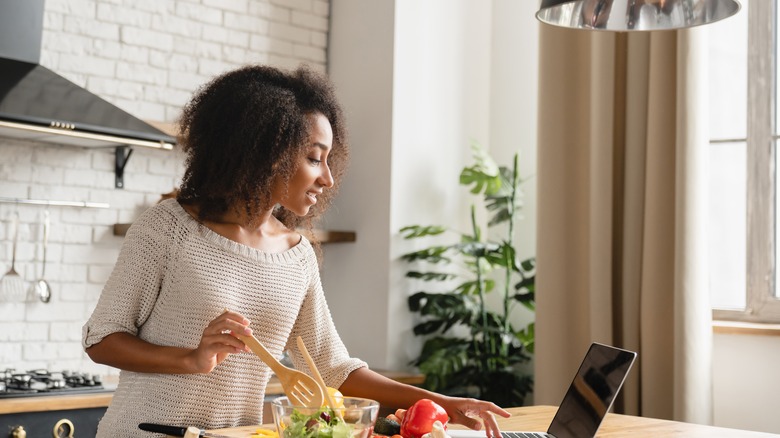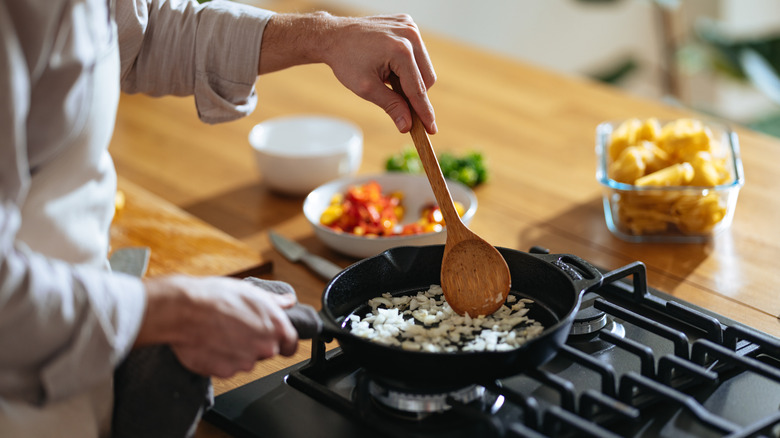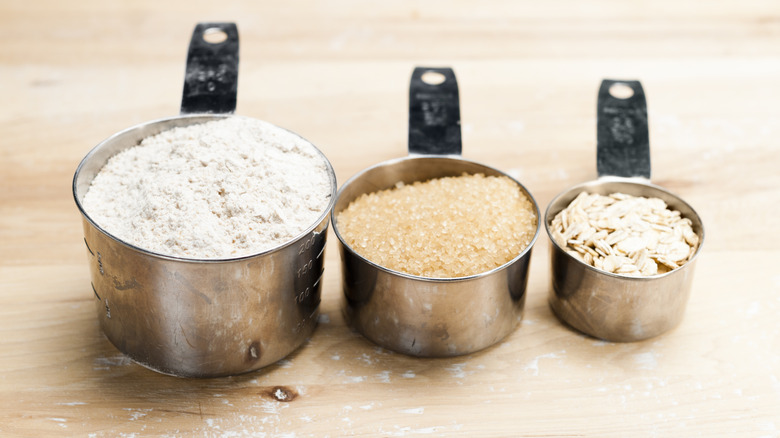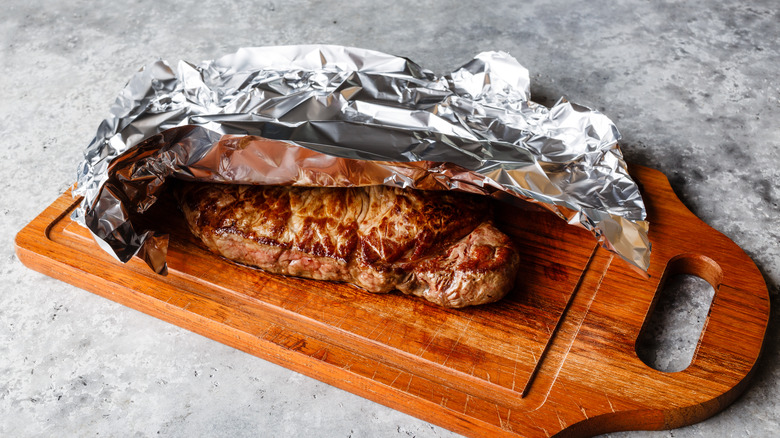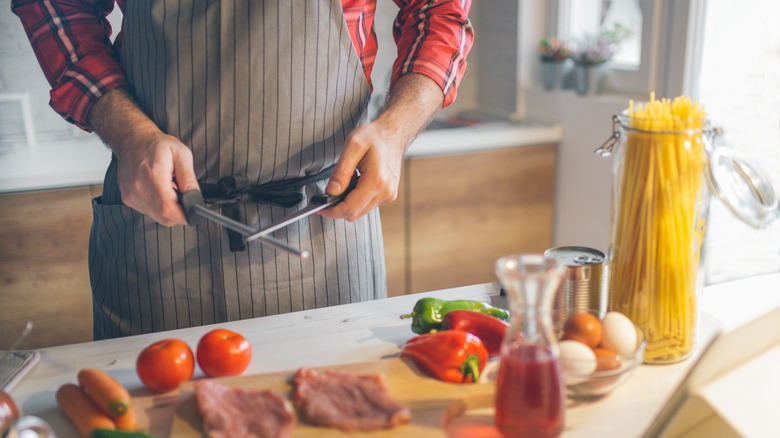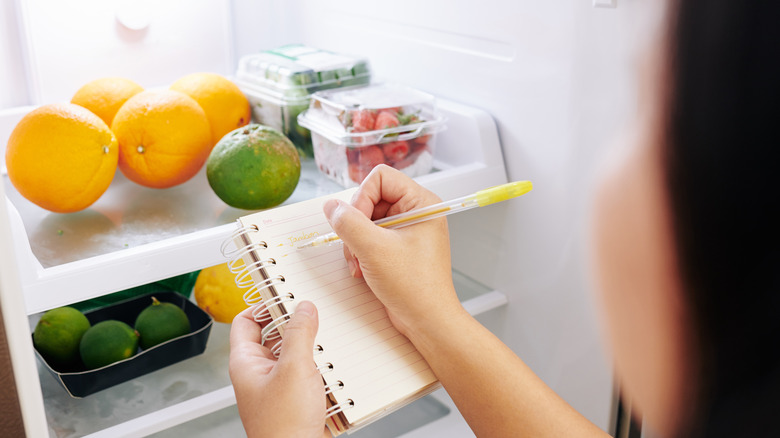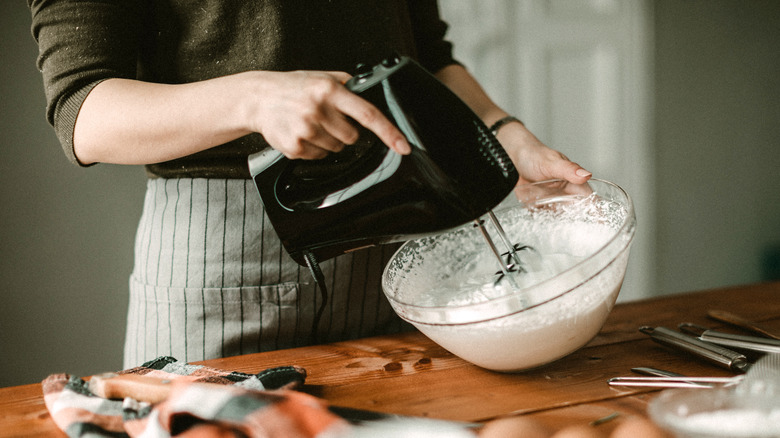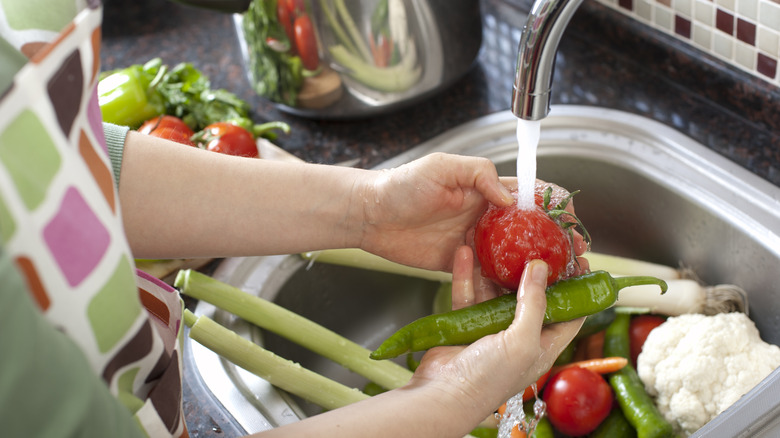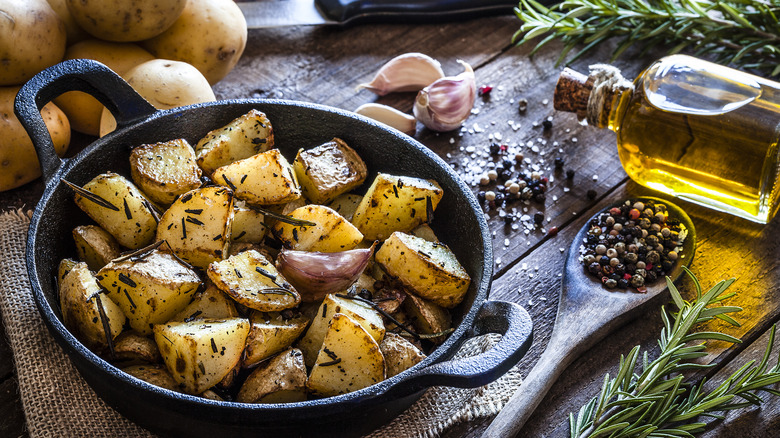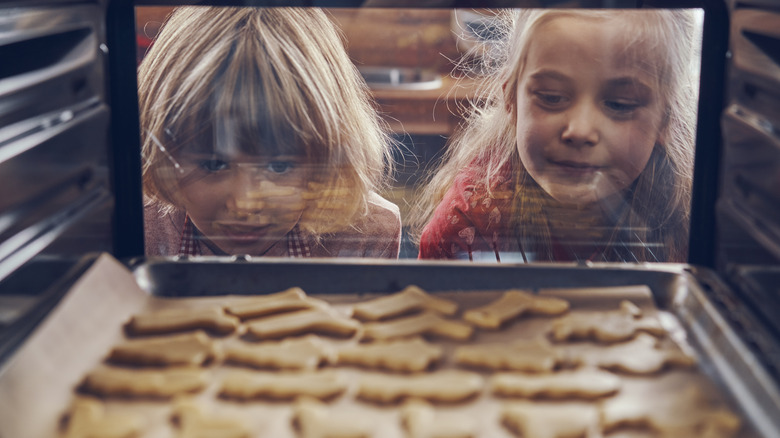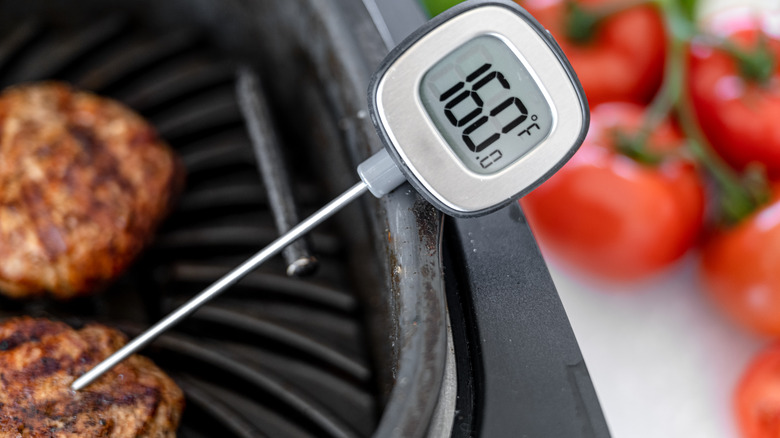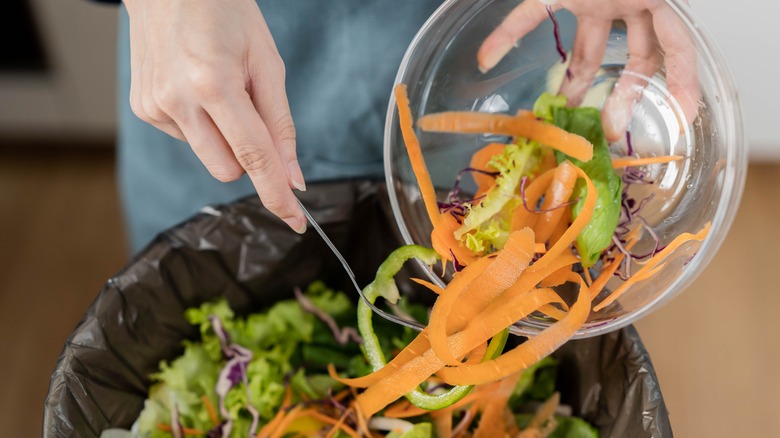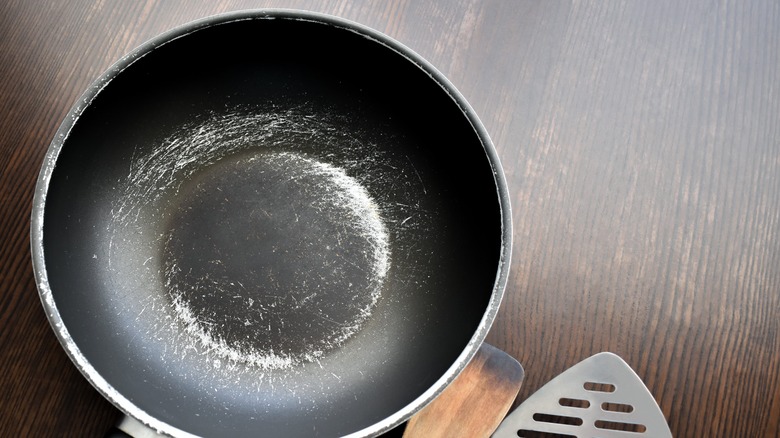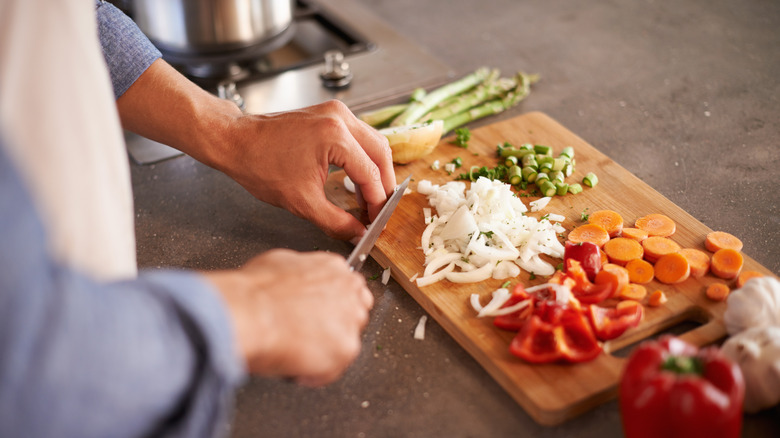Kitchen Mistakes That Are Ruining Your Food
It doesn't matter if you're an expert cook who creates gourmet meals on a regular basis or just starting out your cooking journey; you've likely made kitchen mistakes that have cost the quality of your food. This is true when making simple meals or multi-step, 5-star restaurant-worthy masterpieces. Even trained chefs make cooking mistakes, and there are so many ways your cooking journey can go wrong. From the tools you use to your preparation and the way you store the ingredients, all these pieces are essential to making your food delicious and safe to eat.
The good news is once you know these common mistakes, they're easy to avoid, and just like that, you'll have leveled up your kitchen skills. Through research, cooking experience, and consulting experts, we've compiled a list of the most common cooking mistakes, as well as how to avoid them in the future. Remember these helpful tips the next time you're in the kitchen to get the most amazing dishes possible.
Not preheating your pan
This is an easy step to skip, especially when you're hungry and in a rush to get cooking. However, taking the time to preheat your pan will result in better flavor and texture and make the cleanup process easier. Using a hot pan for meat, fish, and other foods will help them cook properly. If you add food to a cold pan, it'll cook unevenly as different parts of the pan heat faster. This is especially problematic with meat dishes that need to cook to a specific temperature to be safe to consume. Preheating the pan also aids in caramelization. The hot pan quickly evaporates any moisture from the surface of meat or vegetables and creates a crispy, flavorful, browned exterior.
On top of all that, cleanup is much easier if you heat the pan first. Starting with a cold pan will lead to the ingredients sticking to the surface as they cook, and you'll be stuck scraping the pan clean.
For even cooking, great flavor, and easy cleanup, it's essential to heat your pan. Turn the stovetop on, and let the pan heat for about a minute. You can hold your hand a safe distance above the pan to feel when it's warm. Let the pan heat on its own before adding any cooking oil. Then, let the oil heat evenly before adding your ingredients and cooking.
Incorrect measurements when baking
You may have heard the phrase, "Cooking is an art, and baking is a science." This is because baked goods rely on specific reactions between ingredients to achieve the desired result, which can only happen if the ingredients are measured correctly. When cooking, you can be more improvisational, adding a pinch of this and a dash of that according to your flavor preferences. But, with baking, precision matters. Getting the wrong ratio of flour to wet ingredients or not adding enough of your leavening agent can ruin the recipe before it even goes in the oven.
The best way to avoid these mistakes is to take the guesswork out and follow your recipe carefully. It's also important that you use the proper techniques to measure different baking ingredients. When you measure dry ingredients like flour, baking powder, cornmeal, and sugar, it's important not to pack the ingredients down, as this will lead to adding too much (brown sugar is an exception to this). Instead, use your measuring cup to scoop the dry ingredients from the container and let them pile over top of the measuring cup. Then, use a flat tool, like a butter knife, to scrape the excess ingredient off the top and make it perfectly level with the measuring cup. For liquid, it's better to opt for a spouted liquid measuring cup. When measuring liquid, be sure to get at eye level with the clear measuring cup to ensure you've poured the right amount.
Skipping resting time
After cooking steak or chicken, you may notice your recipe says to let the meat rest for several minutes before slicing it. It's easy to overlook this crucial step, especially when you're hungry and dinner smells delicious. But giving meat time to rest is essential to achieving a perfectly juicy and tender cut. The wait time may test your patience, but you'll be able to taste the difference.
This is because, as the meat rests and cools, the fibers will relax, and the flavorful juices have time to redistribute and be absorbed into the cut of meat. If you cut beef, chicken, or pork before it's had time to reabsorb those juices, the excess liquid will spill out as soon as you cut the meat, and all that delicious flavor will be lost. You can see the difference yourself when you cut into a freshly cooked steak and when you slice a steak that has had five minutes or more to rest. The liquid will spill out of the unrested steak, whereas the rested one will hold that juicy flavor inside. Generally, letting meat dishes rest for 5 to 10 minutes will give you the right results. However, larger pieces of meat will need additional resting time.
Using dull knives
Using a dull knife not only makes cutting ingredients harder, but it's also more dangerous than a well-sharpened tool. The University of Rochester Medical Center explains that cutting with a dull knife requires more pressure to cut through produce and other foods. Because you're pushing down harder to create that pressure, the blade is more likely to slip, leading to kitchen injuries. A well-sharpened knife, on the other hand, is able to glide through the food easily, reducing your risk of cutting yourself. This also results in cleaner cuts, so your food won't have misshapen and jagged edges.
How often you should sharpen your kitchen knives depends on how often you use them. If you're a frequent cook, then sharpening your knives once a week will keep them in good condition. But, if you're only cooking a few nights a week, you may only need to sharpen them every other week. There are a few effective ways to safely check if your knife is dull. You can try the paper test, in which you hold a sheet of paper by the edge and cut downward and diagonal at a 45-degree angle. If the knife catches on the paper, then it needs to be sharpened.
Storing the wrong foods in the fridge
Although many foods are kept their freshest in the fridge, for others you may be ruining their flavor while in storage. Many of us are in the habit of keeping tomatoes, bread, and other everyday groceries in the fridge, but while this is a common storage option, it's not ideal for the flavor. Keeping tomatoes cold can compromise their firm but juicy texture. Bread becomes stale in the fridge and is much better suited to keeping covered in the pantry.
Some other foods you may be storing improperly are avocados and bananas, which will finish ripening to achieve the perfect flavor and texture when stored on the countertop. Potatoes also maintain their texture best stored in a dry, cool place in your pantry rather than the fridge. Coffee is another bad choice to store in the fridge as it can absorb flavors from the food around it. Fresh herbs can lose their flavor and become less effective when stored in the fridge.
When deciding where to store your food, an easy trick is to think of where the ingredients are stocked in the store. Often, produce that is sold at room temperature can stay at room temperature in your home until it is sliced.
Overmixing dough
Overmixing is a common mistake that ruins the texture of baked goods. When combining wet and dry ingredients to make cookie dough, cake batter, or other recipes, it's easy to overmix. This is especially frequent with new bakers, but it can happen to anyone.
The reason that overmixing is a problem is because it leads to too much gluten development. Although gluten is important to the structure of pastries, bread, and other baked goods, too much gluten creates dense, overly chewy baked goods. You may have experienced how disappointing it is to try to make a light, flaky pastry only to end up with an overly dense, unpleasant mixture.
To create the right texture for your breads and desserts, you want to strike the balance between under and overmixing. This may sound like a difficult balance, but it is quite doable once you know what to look for, and it will make a world of difference in the final product. Remember that what your dough should look and feel like varies from recipe to recipe. Read through your recipe directions in advance to better understand what you're looking for. Then proceed slowly, mixing until your dough or batter reaches the desired consistency and stopping without mixing further.
Not drying vegetables
Properly preparing your vegetables can make all the difference in how much you enjoy the healthy dish. To keep your vegetables from becoming mushy and unappetizing, it's essential to dry them before cooking. You've likely been taught to rinse fresh produce under cold water in the sink to get rid of any dirt or pesticides. This is excellent advice, but don't stop there. After running vegetables under water to clean them, the next step is to dry the produce thoroughly. Drying your vegetables is especially important when roasting or sauteing them. If the veggies have excess moisture on the outside, it will stop them from browning properly and achieving the desired crispy texture. If you add wet veggies straight into your pan, they'll become soggy from cooking in the liquid.
To let the vegetables dry, arrange washed vegetables on a clean kitchen towel on your countertop and leave them air dry for about 20 minutes. Or use a kitchen towel or paper towels to thoroughly dry the vegetables by hand for faster results. You can also salt the vegetables to help draw out excess moisture more quickly.
Overcrowding your pan
Don't ruin a good recipe by trying to fit too much into one baking dish or pan. Whether you're cooking in the oven, on the stovetop, or in an instant pot, it's important to give the ingredients enough space to cook. When you're trying to make enough food to feed a large group or to have leftovers, you may end up with more food than fits into one pan. Trying to cram all the food into one dish will lead to the recipe cooking unevenly, not browning correctly, and steaming instead of searing.
Chef Marisa Churchill explained this problem to Business Insider, warning home chefs against adding too much food to one pan. To avoid this cooking disaster, she had an easy recommendation. "Pull out two sauté pans and keep your cooking less crowded," Churchill said. "If you don't have two pans, try cooking in batches. It may take a bit longer, but the results will be worth it." If you're unsure how much food to add to your pan, a good rule of thumb is to add only as much as can fit in a single layer. That way, all the food is heated evenly.
Opening the oven door while baking
Resist the urge to open your oven to check on your recipe. Although you may need to do this once or twice towards the end of the baking time to check if your food is done, frequently opening the oven door can ruin your recipe. This is especially damaging when baking cakes and other recipes that need to rise. Opening the oven door will release some of the hot air and allow cold air to come in. That cold air can ruin the cake's rise and cause it to collapse in the middle. Because of this, it's best to keep the oven door closed as long as possible.
If you're a nervous baker, just use the oven light to keep an eye on the recipe progress from the outside. There are a few cases where you may need to open the oven. For example, if your cake appears to be cooking too quickly around the outside, you can open the oven to tent the dish in foil. The foil will lock in moisture and keep the top from browning too quickly. After adding the foil, close the oven door again and do your best not to open it until the cake has finished baking.
Cooking meat to the wrong temperature
The best way to make sure you don't over or undercook meat recipes is to check the internal temperature. This is an important step for both food safety and flavor. If meat, poultry, or seafood is not properly cooked, it can lead to foodborne illness. To avoid this, keep a meat thermometer in your kitchen so that you can easily check the temperature of your dish before serving. This is also a great way to ensure you don't overcook the meat, as you can use the temperature as your guide instead of over-browning and drying out the recipe.
According to the Food and Drug Administration, meats like beef, pork, veal, and lamb roasts, steaks, and chops should be cooked until they reach at least 145 F (63 C) internal temperature. This is different for ground meat, which you should cook to 160 F (71 C). Poultry such as chicken and turkey need a higher temperature of 165 F (74 C). And finfish should be cooked to 145 F (63 C). When you check the temperature, make sure to insert the instant-read thermometer at the thickest portion of the meat and push the thermometer to the center to get an accurate reading.
Throwing out kitchen scraps
Meat bones and vegetable scraps may seem like kitchen waste, but you can save them to make homemade broth, stocks, and other recipes. This avoids waste and is an excellent way to create incredible flavor. You can gather kitchen scraps over a period of time until you have enough to make a new recipe. Keep vegetable skins and scraps stored in the fridge or freezer until you have enough to simmer in water and make homemade vegetable broth. Similarly, any overripe pieces of vegetable that won't taste good fresh are excellent candidates to add to your next soup recipe or toss into a smoothie.
After carving meat, save the bones to make a flavorful and hearty stock. You can even give those flavorful bones a second life after making your first stock. They can still be used to make Remouillage. Remouillage is a French cooking term for a second stock made with the same meat bones. You can add the used bones to your stock pot along with water and vegetables for extra flavor and simmering until the liquid becomes a rich, savory broth. You can use the broth to make soup, sauces, marinades, and other savory dishes.
Still using old nonstick pans
Good quality kitchen tools can be quite pricy, and we've likely all been guilty of trying to make older equipment last longer. But holding onto the same old pans you've had for years may be ruining your food. Nonstick pans are a highly convenient tool for cooking as they reduce the need for excessive cleanup and make it so you don't need as much cooking oil. However, cooking with old and damaged nonstick pans increases the risk of letting toxic particles into your food.
This is because nonstick pans are often coated with PFAS (per- and polyfluoroalkyl substances). Nonstick pans are still safe to use, assuming you follow the manufacturers' instructions, don't overheat the pan, and don't use damaged pans. Overheated pans and old pans that have visible signs of wear can release toxic chemicals into your food. Avoid this by replacing old non-stick pans with new and reliable tools. When purchasing new pans, you can even opt for nonstick pans that don't contain PFAS to avoid the concern entirely.
Using the same cutting board for all foods
For safe cooking, you should use different cutting boards based on what type of food you're preparing. If you're in the habit of chopping all different kinds of food on one cutting board, switching to separate boards can stop the spread of germs. It's best to have at least two cutting boards in your kitchen. Reserve one for preparing raw meat and one for fresh produce. Remember to wash and dry all your cutting boards between uses.
Britanny Saunier, Executive Director at the Partnership for Food Safety Education, explained to Southern Living why using different cutting boards is so essential. "A separate board for raw meat or seafood keeps bacteria from contaminating your veggies, fruit, or other foods that require no further cooking," she said. "Eventually, you'll cook your meat or seafood to a safe internal temperature ... killing harmful bacteria. However, fresh veggies or fruit are often consumed raw and do not have a kill step." Because of this, you don't want the fresh foods coming in contact with that bacteria at all. You can stop that contamination by washing your hands and using a clean knife and cutting board.
